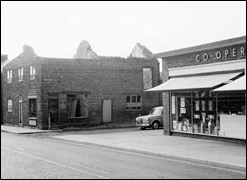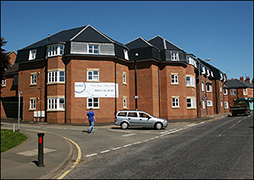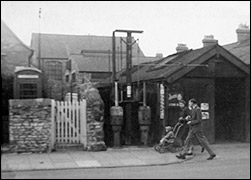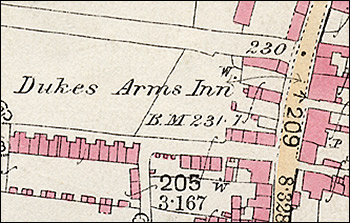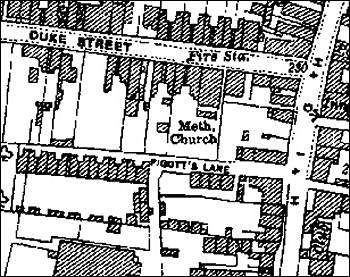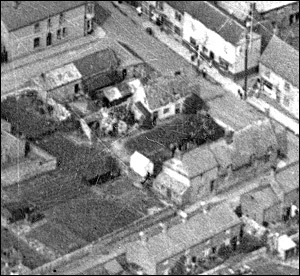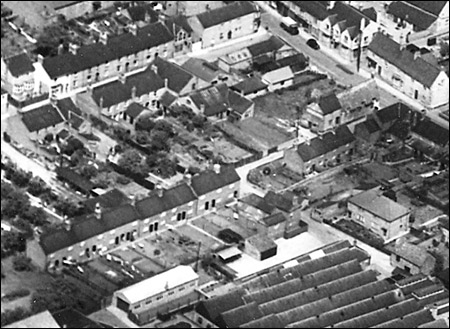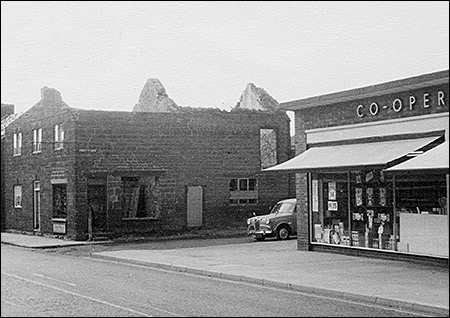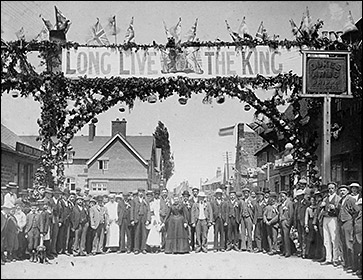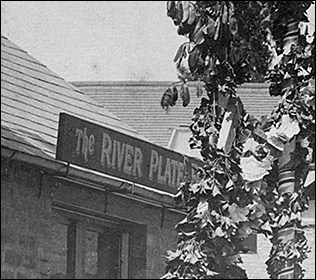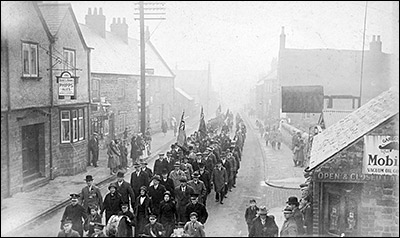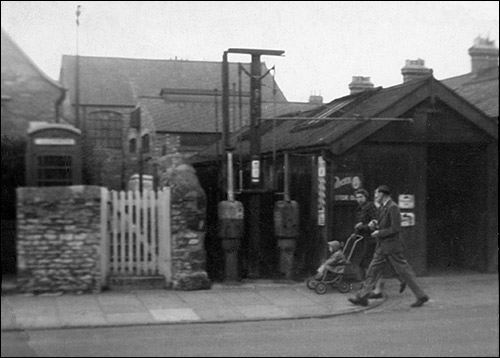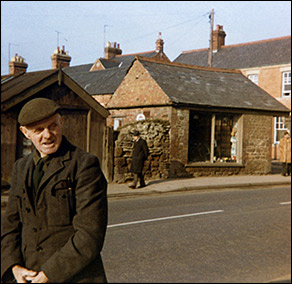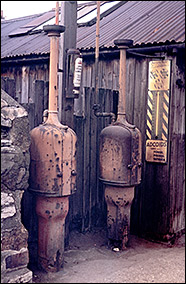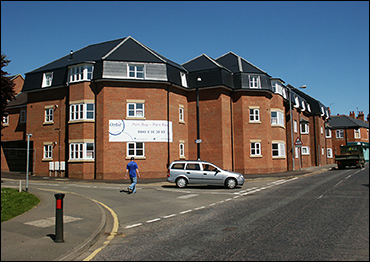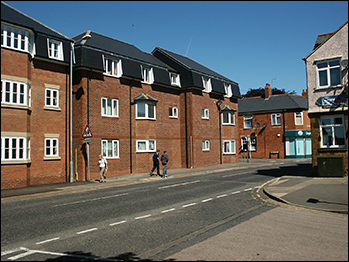|
|||||||||||||||||||||||||||||||||
|
|||||||||||||||||||||||||||||||||
| The area on the western side of the High Street between Duke Street and Pigott's Lane has completely changed over the last fifty years, to the extent that no part of the original frontage now remains. | |||||||||||||||||||||||||||||||||
The 1886 Ordnance Survey map (right) shows a High Street frontage of three properties: one each on the corner of an undeveloped Duke Street and the end of Pigott's Lane, with another property facing the entrance to the School Lane/Croxens Yard area. Unlike Duke Street, Pigott's Lane is developed on both sides, with a couple of cottages on the northern side and a row of properties on the south. The lane leads west before turning south to a park area. At that corner stands Brown's Row - a terrace of thirteen brick houses with long rear gardens to the south side. As indicated on the page detailing Burton Latimer Street Names, Pigott's Lane may have got its name from the families which lived there in the seventeenth century. It has also been spelt Piggott's Lane and Pickett's Lane at various times. At any rate, it is an early part of the town, and predates the coming of the shoe industry.
|
|||||||||||||||||||||||||||||||||
Duke Street had been built up, and included a new Methodist Chapel and a Fire Station at the High Street end. A large shoe factory - The Coles' Boot & Shoe Company - now stood in place of the park area at the end of Pigott's Lane, and at morning, noon and early evening the lane was thronged with workers making their way between home and workplace. As can be seen on the map, there was a small alleyway on the north side of the factory. This led from Pigott's Lane into Spencer Street, and if school finished slightly early at mid-day, children would sometimes go along this alleyway to meet their fathers coming out of the Spencer Street entrance and then walk home with them for dinner. The lane was also the main vehicle access for delivery lorries, but strangely, it remained an unmade road until the latter part of the last century, when the building of the new fire station meant that the lane was finally surfaced with smooth tarmac to allow easy passage for vehicles. There were two other traditional business located at the High Street end of Pigott's Lane in the 1920s. On the southern corner of the lane and the High Street stood a shop which for most of its life was a barber's shop. In the early part of the last century it was kept by Mr Skevington, who provided another valuable service alongside the hairdressing, as Sydney Giles recalls:
Later the Benfords owned it, and for a while the family had two barbers' shops - this one which was manned by son Douglas, and another one in Duke Street run by father Jack. Many an older Burton man will recall going to Douggie Benford's for a haircut. In the attached property just up Pigott's Lane was Frank Smith's bakehouse. His daughter Jenny, now living in Dallas, Texas, recalls:
Of the three properties fronting the High Street between Pigott's Lane and Duke Street, the centre and southern ones were cottages, as can be seen from the aerial photos below.
Sadly, the pair of stone cottages at the bottom of Pigott's Lane did not long survive the 1950 aerial view. A couple of years later, the Co-op acquired the site and demolished the cottages to make way for a new self-service foodstore with a butcher's shop attached - in essence this was Burton's first supermarket. Brown's Row remained in place a little longer. For the Queen's Coronation in 1953, a large crown motif - together with the inscription E II R 1953 - was painted on the bare red brick end facing Pigott's Lane. It survived in a faded state into the mid-1960s. Brown's Row was eventually pulled down to make way for the new fire station which opened in 1973. At least Pigott's Lane was finally then given a proper tarmac surface! Another casualty of the late 1960s was Benford's barber's shop. The buildings on the south side of the lane, together with about sixty yards of High Street frontage known as "The High Causeway" were demolished to make way for the new Library and the new Health Centre.
After the closure of all Co-op operations in the town in the 1990s, the former store at the bottom of Pigott's Lane continued to operate under a series of new owners, including a glazing firm and a monument stone masons. For a while, the right-hand end of the building - the former butcher's serction - served as a cafe. In 2005 the site was acquired for redevelopment, and one of the last traces of the Co-op was no more. The site is once more residential, and new houses and apartments now occupy the land where the old stone cottages once stood (see images and film clip at the foot of this page). Duke Street corner On the corner of Duke Street and the High Street stood a small shop which would have been described by many Burtonians in the last century as part of "Charlie's Garage", but it was not always thus. The original build date has not yet been fixed, but certainly in 1902 it was nothing like a garage, as seen in the photo below.
By the 1920s, the Ward family had started up their cycle repair business on the site, and in the public mind this would largely determine the role of the property for the rest of its life. A wooden garage was erected along with two petrol pumps which remained a fixture long after their working life was over. The cycle business remained at the core of the firm, even if some work on cars was occasionally carried out. For some obcsure reason, although the family name of the owners was Ward, heir to the business - Charles - who ran the operation in the middle of the last century, was always known to everyone in Burton as "Charlie Charles"
After Charlie's death, The site continued to have some connection with transport. First the garage and later the shop were levelled to become a car lot. Finally, the site was acquired for residential redevelopment and new three-storey buildings changed the appearance of this part of town for the present as well as the foreseeable future.
|
|||||||||||||||||||||||||||||||||
